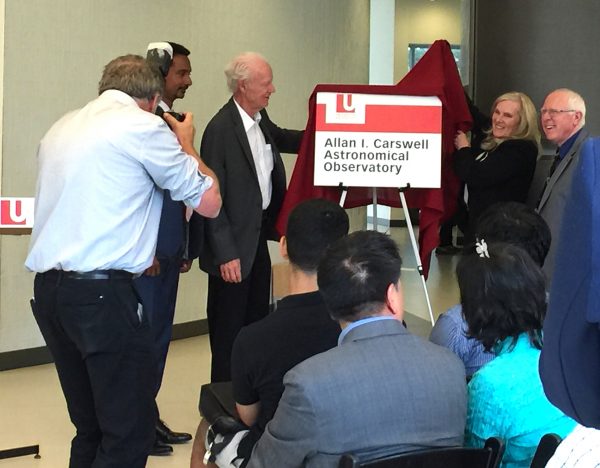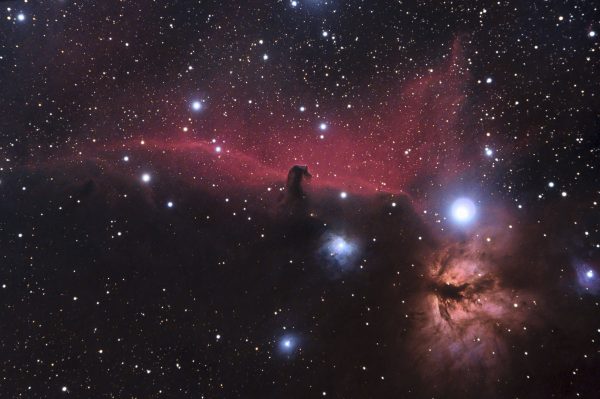Toronto law firm Aird & Berlis LLP, together with its partner Randy Williamson, will support the next high potential venture to come out of York University’s entrepreneurship unit with a generous donation of cash and legal services.
Aird & Berlis’s support for Innovation York’s entrepreneurship unit, LaunchYU, was announced at the program’s graduation Sept. 19. Students who had completed an intensive 20 weeks of training in the LaunchYU AccelerateUP program pitched their ventures to an audience of industry executives, investors and government officials at the event.
The three top ventures were awarded $5,000 from Innovation York. These ventures will now work with mentors throughout the fall in order to compete for the new Aird & Berlis StartupSource Market Entry Award.
In late January, these top three ventures will be judged on the progress they have made and their ability to take their venture to market. The top startup will be awarded $12,500 and receive an equal amount of Aird & Berlis’s StartupSource legal services. The total value of Aird & Berlis’s and Williamson’s commitment is expected to be $100,000 over the next four years.

Williamson, a partner in Aird & Berlis LLP’s Corporate/Commercial Group, has been a member of York University’s Board of Governors since 2013. He chairs York’s Alumni Board, its Pension Board of Trustees and its Endowment Fund’s Investment Committee. He is an alumnus of York University’s Osgoode Hall Law School.
“Our firm’s StartupSource Group is focused on the success of the next set of Canada’s great companies, helping them organize themselves, and their investor and other partner relationships,” said Williamson. “We also help them leverage and protect those relationships and their valuable intellectual assets. We believe that the companies coming out of York University’s LaunchYU programs could be among those great Canadian successes, and we are delighted to support them in getting there.”

LaunchYU has supported more than 1,850 entrepreneurs and more than 90 ventures in its first three years of operation. Open to students, faculty, staff and community members, its goal is to support high impact for-profit and non-profit ventures during their formative years.
“LaunchYU engages entrepreneurs across campus and in the surrounding community to connect, collaborate, learn and succeed,” said Robert Haché, York’s vice-president Research & Innovation. “Entrepreneurship has become an integral part of the innovation culture at York University.”
LaunchYU has three programs that support entrepreneurs: IgniteUP, a mentorship program; RevUP, a pre-accelerator workshop series; and AccelerateUP, a four-month intensive program to support 20 ventures annually to build, launch and scale.
The new Aird & Berlis StartupSource Market Entry Award for the top AccelerateUP graduate is designed to help the winning venture maximize their opportunity for success.
About Aird & Berlis LLP
Aird & Berlis LLP is a leading Canadian law firm based in Toronto, serving clients across Canada and globally. The firm’s practice encompasses all principal areas of business law, including corporate/commercial, corporate finance, banking, insolvency and restructuring, energy, environmental, infrastructure/P3, technology and intellectual property, litigation, labour and employment, municipal and land use planning, real estate and tax. The firm’s diverse client base ranges from entrepreneurs to multinational corporations.




 The David Suzuki Foundation and York University are presenting an important one-day symposium on the impacts of systemic pesticides, Sept. 21, from 9am to 5pm, in the Stong Dining Hall, Stong College, Keele campus.
The David Suzuki Foundation and York University are presenting an important one-day symposium on the impacts of systemic pesticides, Sept. 21, from 9am to 5pm, in the Stong Dining Hall, Stong College, Keele campus.

















 On Sept. 17, in collaboration with Nettie Lambert, Shane Camastro (Titiesg Wîcinímintôwak), Janet Csontos and Lisa Myers, Sister Co-Resister’s Walking Salon works through concepts of belonging, proprietary understandings of land, and Canada’s immigrant paradigm and treaty partnership identity. Artists and academics Syrus Marcus Ware and Gloria Swain from the Faculty of Environmental Studies (FES) guide collective investigations by weaving together a series of interruptions that do not underestimate the divisive lines that suburban boundaries can create and that normalizing notions of belonging can maintain. Suburban Hospitality is co-presented with FES and programmed by Suzanne Carte, Emelie Chhangur, Lisa Myers and Honor Ford-Smith.
On Sept. 17, in collaboration with Nettie Lambert, Shane Camastro (Titiesg Wîcinímintôwak), Janet Csontos and Lisa Myers, Sister Co-Resister’s Walking Salon works through concepts of belonging, proprietary understandings of land, and Canada’s immigrant paradigm and treaty partnership identity. Artists and academics Syrus Marcus Ware and Gloria Swain from the Faculty of Environmental Studies (FES) guide collective investigations by weaving together a series of interruptions that do not underestimate the divisive lines that suburban boundaries can create and that normalizing notions of belonging can maintain. Suburban Hospitality is co-presented with FES and programmed by Suzanne Carte, Emelie Chhangur, Lisa Myers and Honor Ford-Smith.






